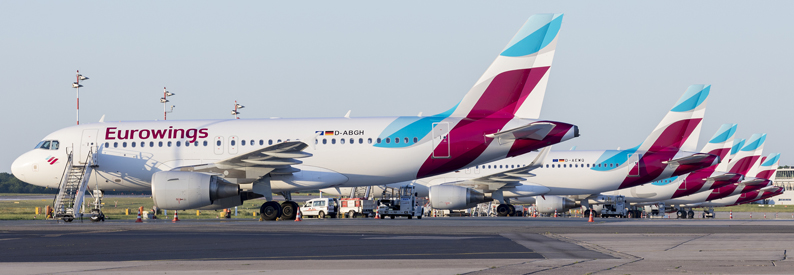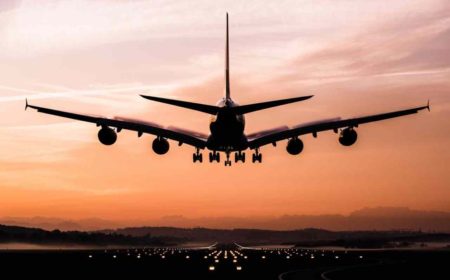
Many European airlines spent much of the past two decades asking governments to leave the airline industry. Now, many are begging for help, and most will get it, even if all may not deserve saving.
It is different than in the United States. The U.S. government is bailing out airlines because the country needs a robust transportation network, but if one carrier doesn’t make it, life will go on. Other airlines, perhaps even new ones, will fill gaps.
In Europe, bailout discussion is more fraught. In this crisis, governments are not always thinking about how many capacity markets need, but instead about national pride. Regardless of market conditions, lawmakers may not want to see national airlines go bust, for reasons of politics, nostalgia, and even national security.
In the coming weeks, politicians will leverage state aid rules that allow them to help national carriers in a crisis. Some airlines will get loans, while others may get the ultimate saving – re-nationalization.
Just as in the United States, many larger airline groups deserve aid. In recent years, International Airlines Group, owner of British Airways, and Lufthansa Group have shed bloated pasts, even if they still might operate more brands than necessary. Air France-KLM is behind, but is improving, and deserves help, as do Ryanair and EasyJet, two behemoths of pre-Covid 19 Europe that set standards for low-cost airlines everywhere.
What about the rest? Amid the chaos, some European countries may boost airlines that probably don’t need to exist. Italy’s Alitalia tops every list, but there are others. Does Scandinavia need two airlines? Does Austria need one? What about Belgium? How about Portugal?
Consider that the European Union is a single market, and an airline from one member state can fly any route from or within another. If policymakers seek air service, they can entice any EU-flagged airline to fly. Yet, that may not matter now, with many governments poised to rescue airlines that fly their flags.
“You are going to see significant state involvement,” said Samuel Engel, senior vice president and head of the aviation group at ICF, a consulting firm. “It is less likely to look like the national carriers of the pre-privatization era. But it will have many of the same effects. The governments may be on the hook for their debts, or may justify a level of service.”
It’s an interesting reversal of recent trends, said Engel, who has advised airlines on how to privatize to get away from government interference.
“We are in an extraordinary situation, aren’t we?” he said. “I don’t think anyone thought governments would have to go back in.”
With five strong airline groups, Europe probably would look like the United States, where six carriers control the vast majority of market share. Travelers may not love the arrangement – some complaint about lack of competition – but it served consumers well through much of the past decade.
That’s unlikely to happen, however.
Just look at Alitalia. It has been a mess for years, and each time it appears to be on the brink of liquidation, the Italian government, or an arm of the Italian government, steps in. The EU limits how much state aid airlines can receive, so insiders figured eventually the airline would disappear. But the Italian government decided not to let a good crisis go to waste, so it re-nationalized Alitalia.
“The funny thing is before the crisis there were lots of insolvencies in Europe and since the crisis, there is no insolvency,” said Martin Gauss, CEO of Air Baltic, a state-owned Latvian carrier.
Other airlines have similar situations. Norwegian Air was in trouble before the novel Coronavirus pandemic and might have failed in a typical recession. Now, the airline has appealed to Norway’s government, accepting about $290 million in guarantees last month, though it said it needs much more from private markets.
It’s an interesting juxtaposition for an airline that two years ago argued against government interference. After Norway sold its shares in its national airline, Scandinavian Airlines, Norwegian CEO Bjorn Kjos told Skift the government made the right decision.
“Some countries have gotten to their senses and they are trying to get out of these legacy airlines,” said Kjos, who retired last year. “You don’t need it. It’s just a waste. You should concentrate on totally different things.”
These days, Scandinavian Airlines, or SAS, is not in much better shape. As the national carrier of three countries – Norway, Sweden, and Denmark – its limited resources have been stretched across three hubs, rather than one strong one. SAS also lacks a strong transatlantic joint venture partner, so it underperforms on U.S. routes.
“You would not invent an airline owned by a government, never mind by two or three governments,” said John Strickland, a UK-based airline consultant.
Another airline in a similar predicament is TAP Air Portugal. It has built a decent franchise with flights to the United States and Brazil but lacks the breadth of larger groups. The government already owns half of TAP but could have to provide further assistance.
Will these airlines go away? Norwegian might, because it lacks the rich history of the others and already was struggling.
The others are more likely to survive, though Strickland asked if governments might give up if the climate worsens. In a worst-case scenario, more governments might be OK with running an airline – Poland, Romania, Finland, and Latvia already control their national carriers – but others may find it to be too much, considering how many other elements of their economies may need assistance.
“There is national pride, and if we put in the unquantifiable effect of populist governments, it makes it even more challenging,” Strickland said. “But we have never faced a crisis like this one. There are so many elements about how this will turn out.”
Broadly speaking, the five major European groups have major advantages over independent airlines. But some groups also have issues.
As the weakest among them, Air France-KLM was in some peril before the crisis, with CEO Ben Smith wrestling with how to compete on short-haul routes with low-cost-carriers and domestic routes with high-speed trains. Given the importance of the company for France and the Netherlands – both nations own part of Air France-KLM – the airlines should make it, but it could be expensive for each nation.
“It is now clearer than ever that support from our both Dutch and French governments is needed to meet our cash requirements and enable us to continue our operations once the crisis is over,” Smith said last week.
There are bigger questions about some Lufthansa Group brands. Lufthansa, the German airline, probably is continental Europe’s most successful carrier, and its government will help it. Swiss International Air Lines, a Lufthansa Group airline, also is a robust carrier with a successful hub in Zurich.
But Lufthansa Group also owns Brussels Airlines and Austrian Airlines, and each is in some danger.
To the Austrian people and politicians, the airline remains a patriotic symbol that carries the nation’s flag around the world and provides vital air links. But Austrian, founded in 1957, is no longer a “real” airline, as Ryanair, which has its own Austrian arm, made clear after the government signaled it might pump as much as 800 million euros into it.
“We do not believe that Lufthansa should receive state aid from Austrian taxpayers in exactly the same way we do not believe that Ryanair should receive state aid from Austrian taxpayers,” Andreas Gruber, a Ryanair Group executive, said, according to Reuters. In effect, Gruber said, Austrians would be assisting a German company.
Brussels Airlines has been a poor performer for Lufthansa Group could disappear without hurting consumers. Presumably, Lufthansa could take over the airline’s most profitable routes. But the Belgian government may provide assistance nonetheless.
If the goal is to get people from point A to point B, perhaps not every country needs an airline. If demand exists, some carriers will fill it, even if the airline is not based in that country.
Ryanair and Wizzair have made a fortune filling in gaps on short-haul routes, and someday, people in Austria might get used to flying Lufthansa to New York or Los Angeles rather than the national airline.
But even in 2020, some arguments remain for why a country needs a flag carrier. Over the past month, many flag airlines have been repurposed by governments, flying medical cargo, and repatriation flights. Governments could contract that flying to outside entities, but perhaps there is something comforting about sending the national airline abroad.
“We are seeing governments around the world take drastic and quick actions to sustain their people,” Engel said.
National airlines may also help in recovery. Eventually, the economic and public health climate will improve and airlines will benefit. But short term, governments may need airlines to fly money-losing routes to get people where they need to go. There are other ways to do this – the Italian government could offer subsidies to an outside carrier like Ryanair – but propping up the local airline may be a better move, politically.
Still, Air Baltic’s Gauss said he expects not every flag carrier will make it. He said his airline works as a government-owned enterprise because Latvia has limited connections with the rest of Europe. But other countries don’t have these limitations.
“There might be some states like Italy who say, OK, we now definitely need a state-controlled airline but the other countries may be OK with their air infrastructure being served by other carriers,” Gauss said. “I don’t think that we will see this coming back where every country has its own airline.” skift.com



